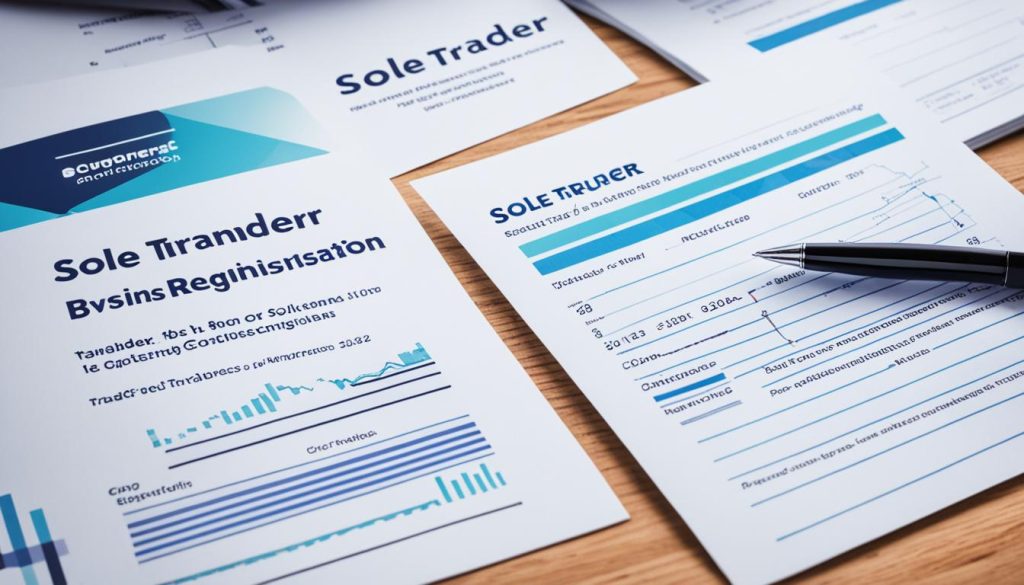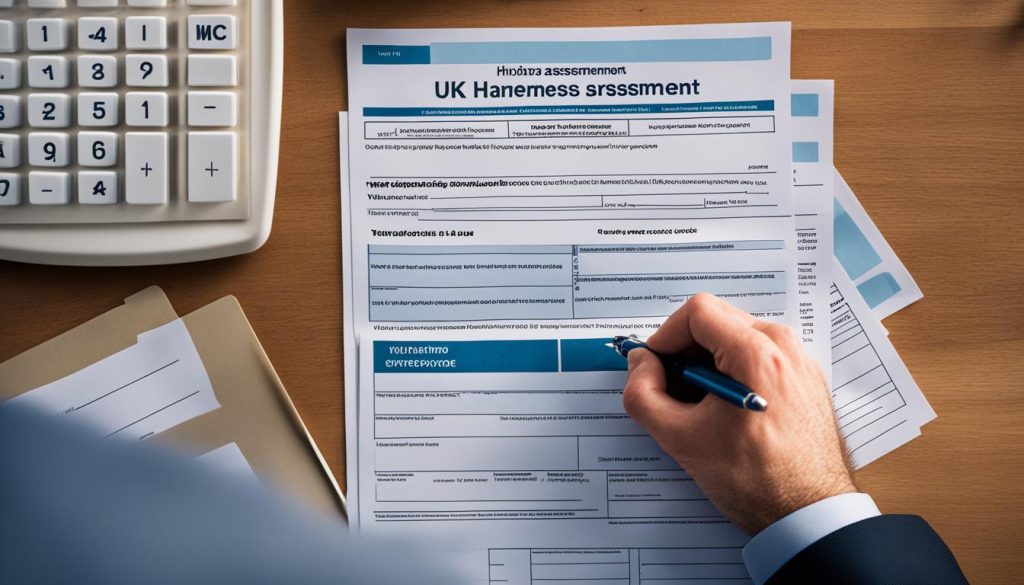Are you considering starting your own business in the UK as a sole trader? Setting up as a sole trader can be a rewarding venture, offering independence and flexibility. In this guide, we’ll walk you through the essential steps to establish your sole trader business successfully.
Setting up as a sole trader is a popular choice for many aspiring entrepreneurs due to its simplicity and low start-up costs. As a sole trader, you’ll be the sole owner of your business, with full control over decision-making and profits. This guide will cover everything from registering your business with HM Revenue and Customs (HMRC) to managing your finances and complying with legal requirements.
Whether you’re starting a freelance business, consultancy, or any other solo venture, this guide will provide you with the knowledge and resources you need to set up your sole trader business with confidence.
How to Set Up a Sole Trader Business?
Benefits of Setting Up a Sole Trader Business
Setting up a sole trader business comes with several advantages. Firstly, it is quick to set up and has fewer statutory obligations compared to other business structures. You don’t need to register a company name or complete any Companies House forms. As a sole trader, you have an easier accounting job, as you are not required to meet the same accounting standards as limited companies. You can keep all the profits your business generates, and you have the flexibility to make quick decisions without the need for board or shareholder approval. Additionally, as a sole trader, you can maintain the privacy of your financial information.

Advantages of Setting Up a Sole Trader Business:
- Quick and simple setup process
- Less administrative burden compared to other business structures
- No need to register a company name or complete Companies House forms
- Easier accounting standards
- Full control over business decisions
- Ability to keep all profits generated
- Privacy of financial information
Comparison Table: Sole Trader vs. Other Business Structures
| Sole Trader | Limited Company | Partnership | |
|---|---|---|---|
| Legal Structure | Individual | Separate legal entity | Two or more individuals |
| Liability | Unlimited | Limited to company’s assets | Usually unlimited |
| Accounting Requirements | Less stringent | Follows accounting standards | Dependent on partnership agreement |
| Decision-Making | Full control | Shared between directors/shareholders | Shared between partners |
As the table above highlights, setting up a sole trader business offers simplicity, flexibility, and control over your business operations.
Responsibilities of a Sole Trader
As a sole trader, you have certain responsibilities that you need to fulfill in order to comply with UK regulations and manage your business effectively.
Here are some of the main responsibilities:
- Keeping accurate business records: It is crucial to maintain proper records of your business activities, including income, expenses, invoices, and receipts. This will help you in filing your tax returns accurately and managing your finances efficiently.
- Sending a Self Assessment tax return to HMRC: As a sole trader, you are required to submit a Self Assessment tax return to HMRC each year. This tax return includes details of your business income, expenses, and profits. You will need to calculate and pay Income Tax on your profits as well as Class 2 and Class 4 National Insurance contributions.
- Using HMRC’s calculator: To ensure that you have appropriately budgeted for your tax payments, it is recommended to utilize HMRC’s tax calculator. This tool will help you estimate the amount of tax you owe and plan your finances accordingly.
- Registering for the Construction Industry Scheme (CIS), if applicable: If you work in the construction industry as a sole trader, you need to register with HMRC for the Construction Industry Scheme (CIS). This scheme ensures that appropriate tax deductions are made from payments to subcontractors.
- Complying with business name regulations: When choosing a business name, you must ensure that it complies with regulations and does not contain any restricted words. You can check the guidelines provided by Companies House to ensure that your business name meets the required criteria.
By fulfilling these responsibilities, you can maintain proper financial records, meet your tax obligations, and ensure the smooth operation of your sole trader business.

Differences Between Sole Trader and Self-Employed
While a sole trader is considered self-employed, there are differences between the two. A sole trader is an individual who runs their own business and is personally responsible for any losses made by the business. On the other hand, self-employed individuals can include sole traders, as well as those in business partnerships or running limited companies. The key distinction is in the structure of the business. Sole traders have unlimited liability and have full control over their business, while self-employed individuals may have additional responsibilities and structures depending on their chosen business type.
Let’s take a closer look at the differences between sole traders and self-employed individuals:
Sole Trader
- Runs their own business with unlimited liability
- Personally responsible for any losses made by the business
- Full control over the business
- Flexibility in decision-making
- Not required to meet the same accounting standards as limited companies
- Can keep all the profits generated by the business
Self-Employed
- Includes sole traders, business partnerships, and limited companies
- Liability and responsibility may be shared among multiple individuals, depending on the business structure
- Additional legal and financial obligations depending on the chosen business type
- May require board or shareholder approval for certain decisions
- Required to meet accounting standards appropriate for their chosen business type
- May have to distribute profits among partners or shareholders
Understanding the differences between sole traders and self-employed individuals is crucial when deciding on the most suitable business structure for your needs. Consider consulting with a legal or financial professional to ensure you make an informed decision.

Registering as a Sole Trader
To register as a sole trader, you need to contact HMRC and inform them that you are self-employed and will be paying tax as a sole trader. You will then need to complete the HMRC registration form for self-assessment, either online or by post. This will provide you with a 10-digit unique taxpayer reference and an activation code for your HMRC online account. It is important to complete your annual self-assessment tax returns using this account. Unlike limited companies, sole traders do not need to register with Companies House.

| Steps to Register as a Sole Trader | How to Complete the Registration |
|---|---|
| 1. Contact HMRC | Navigate to HMRC’s website or call their helpline to notify them of your self-employment status. |
| 2. Complete the Registration Form | Fill out the HMRC registration form for self-assessment, providing all the necessary details and information about your business. |
| 3. Obtain Unique Taxpayer Reference | Upon successful registration, you will receive a 10-digit unique taxpayer reference that is essential for managing your tax obligations. |
| 4. Activate Your HMRC Online Account | Use the activation code provided to set up your HMRC online account, which will enable you to file your annual self-assessment tax returns conveniently. |
| 5. Keep Up with Annual Tax Returns | Ensure you complete and submit your self-assessment tax returns accurately and on time, reflecting your business’s financial activities. |
Conclusion
In conclusion, setting up a sole trader business in the UK involves registering for Self Assessment, fulfilling specific responsibilities, and understanding the distinctions from other business structures. While there are clear advantages to being a sole trader, such as the flexibility and ease of setup, it is crucial to recognize the accompanying responsibilities. By diligently following the necessary steps and effectively managing your business, you can successfully establish and operate a sole trader business in the UK.
Registering for Self Assessment with HMRC is the first crucial step in the sole trader setup process. This ensures that you are properly registered for Class 2 National Insurance contributions and enables you to submit an annual Self Assessment tax return. It’s important to budget for income tax and National Insurance payments accordingly. Additionally, if your turnover exceeds £85,000, VAT registration becomes mandatory.
As a sole trader, you are responsible for maintaining accurate business records and submitting a Self Assessment tax return each year. Compliance with HMRC regulations is essential, especially for those working in the construction industry. Furthermore, understanding the differences between being a sole trader and self-employed can provide clarity on the structure and liabilities of your business.
In summary, setting up a sole trader business in the UK requires careful planning, adherence to legal obligations, and a comprehensive understanding of the business structure. While it may seem overwhelming at first, the benefits of flexibility and control offered by a sole trader business make it an attractive option for many entrepreneurs. By considering all the aspects discussed, you will be well-equipped to embark on your journey as a successful sole trader.





